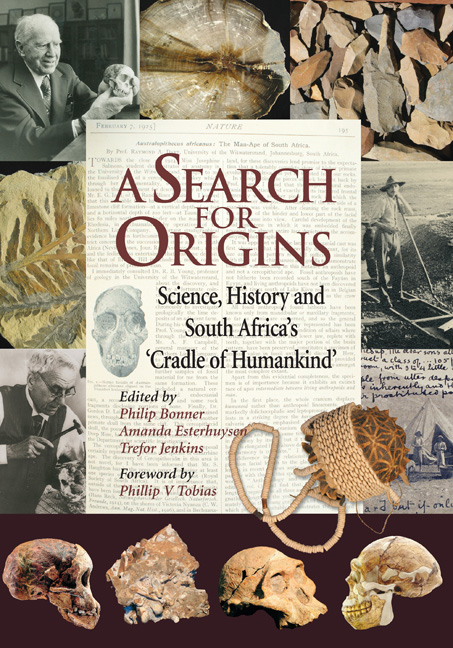Book contents
- Frontmatter
- Contents
- Map
- Foreword
- PART 1 Introduction: Africa is Seldom What It Seems
- PART 2 Introduction: Fossils and Genes: A New Anthropology of Evolution
- Chapter 2 A History of South African Palaeoanthropology
- Chapter 3 Fossil Hominids of the ‘Cradle of Humankind’
- Chapter 4 Unravelling the History of Modern Humans in Southern Africa: The Contribution of Genetic Studies
- Chapter 5 Fossil Plants from the ‘Cradle of Humankind’
- PART 3 Introduction: The Emerging Stone Age
- PART 4 Introduction: The Myth of the Vacant Land
- PART 5 Introduction: The Racial Paradox: Sterkfontein, Smuts and Segregation
- Epilogue: Voice of Politics, Voice of Science: Politics and Science After 1945
- Notes, references and recommended reading
- Notes on contributors
- Acknowledgements
- Index
Chapter 3 - Fossil Hominids of the ‘Cradle of Humankind’
from PART 2 - Introduction: Fossils and Genes: A New Anthropology of Evolution
Published online by Cambridge University Press: 31 May 2019
- Frontmatter
- Contents
- Map
- Foreword
- PART 1 Introduction: Africa is Seldom What It Seems
- PART 2 Introduction: Fossils and Genes: A New Anthropology of Evolution
- Chapter 2 A History of South African Palaeoanthropology
- Chapter 3 Fossil Hominids of the ‘Cradle of Humankind’
- Chapter 4 Unravelling the History of Modern Humans in Southern Africa: The Contribution of Genetic Studies
- Chapter 5 Fossil Plants from the ‘Cradle of Humankind’
- PART 3 Introduction: The Emerging Stone Age
- PART 4 Introduction: The Myth of the Vacant Land
- PART 5 Introduction: The Racial Paradox: Sterkfontein, Smuts and Segregation
- Epilogue: Voice of Politics, Voice of Science: Politics and Science After 1945
- Notes, references and recommended reading
- Notes on contributors
- Acknowledgements
- Index
Summary
The Plio-Pleistocene fossil sites of the ‘Cradle of Humankind’ in South Africa have produced an important and extensive collection of fossil hominids – a group of primates including modern humans, their direct ancestors, and closely related species. However, the history of research on human evolution does not begin in South Africa, and the first fossils recognised as human ancestors came from Europe and Asia, representing relatively late periods in human evolutionary history.
At the time that Charles Darwin published On the Origin of Species in 1859 there was barely any known hominid fossil record, and the few fossils that had been recovered during his lifetime stimulated so much controversy that their true significance was not yet realised at the time of his death in 1882. However, Darwin made two speculations that contributed significantly to views about human evolution in the late nineteenth and early twentieth centuries. Firstly, he claimed that on the basis of the geographic distribution of living great apes (chimpanzees, gorillas, and orang-utans – even then recognised as our closest living evolutionary relatives), we should expect to find ancestral human fossils in either Africa or Asia. Second was his prediction that the human ancestor would be intermediate between modern humans and apes, exhibiting many ape-like characteristics. However, Darwin also suggested that a superior intellect, accompanied by a requisite large brain, would have been necessary even in early ancestors in order for ‘human-like’ traits to have evolved.
The first claim was cited by Dubois in justifying his choice to excavate in Asia (at Java, Indonesia, in the 1890s) where he discovered hominid fossils now attributed to Homo erectus. It was also used by Dart in 1925 to bolster support for his interpretation of the ‘Taung child’, for which he named the taxon Australopithecus africanus from South Africa as an early and primitive ‘missing link’. (These finds are discussed more fully in Chapter 2.)
However, it turned out that part of Darwin's second prediction was not correct.While the earlier finds of Neandertal and H. erectus fossils seemed to support the idea of largebrained human ancestors, they did not demonstrate many ape-like characteristics.
- Type
- Chapter
- Information
- A Search for OriginsScience, History and South Africa's ‘Cradle of Humankind’, pp. 50 - 77Publisher: Wits University PressPrint publication year: 2007



